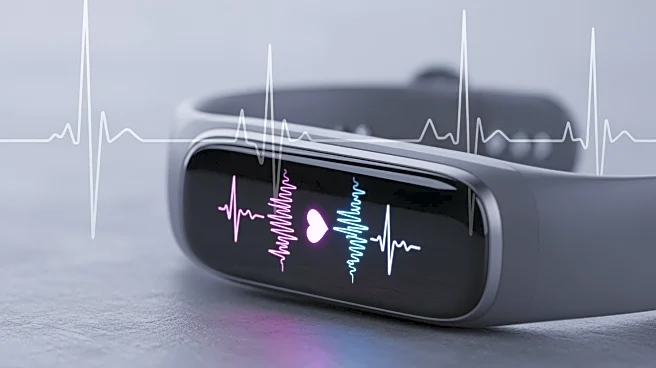What's Happening?
A study utilizing wearable devices has provided insights into heart rate variability (HRV) patterns among participants in the Chronic Renal Insufficiency Cohort (CRIC). The research found that HRV, measured
as SDNN, varies significantly with factors such as sex, disease status, and medication use. Notably, beta blocker use was associated with increased HRV, aligning with its known effects on parasympathetic activity. The study highlights the potential of wearable technology to monitor cardiovascular health in real-world settings.
Why It's Important?
The ability to track HRV using wearable devices offers a non-invasive method to assess cardiovascular health, particularly in populations with chronic kidney disease. This approach could lead to improved management of cardiovascular risk factors and enhance patient outcomes. By identifying time-specific HRV patterns, clinicians can tailor interventions to address individual health needs, potentially reducing the incidence of cardiovascular events.
What's Next?
Further research will explore the predictive value of HRV metrics for cardiovascular events and other clinical outcomes in the CRIC population. The study sets the stage for larger-scale investigations into the use of wearable technology for continuous health monitoring, which could revolutionize patient care and disease management.
Beyond the Headlines
The study demonstrates the potential of digital health technologies to transform healthcare by providing continuous, real-time data on physiological parameters. This could lead to more personalized and proactive approaches to health management, improving patient engagement and outcomes.











